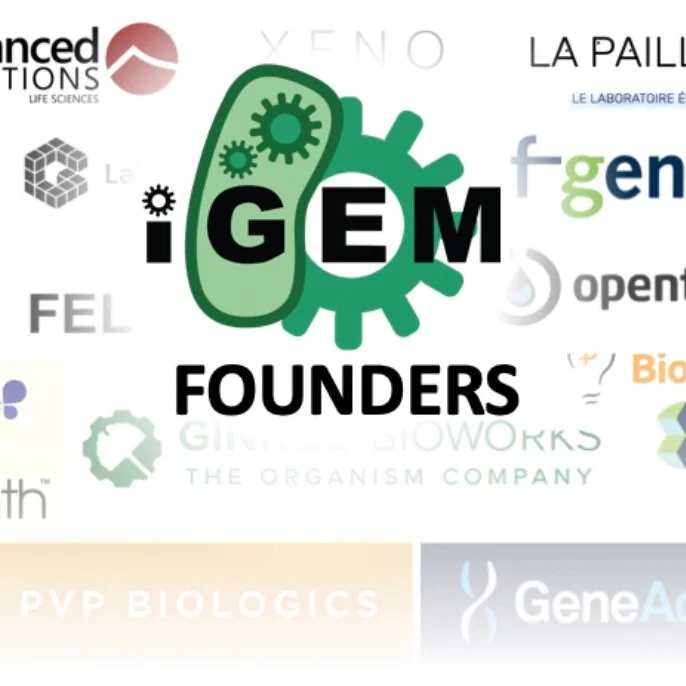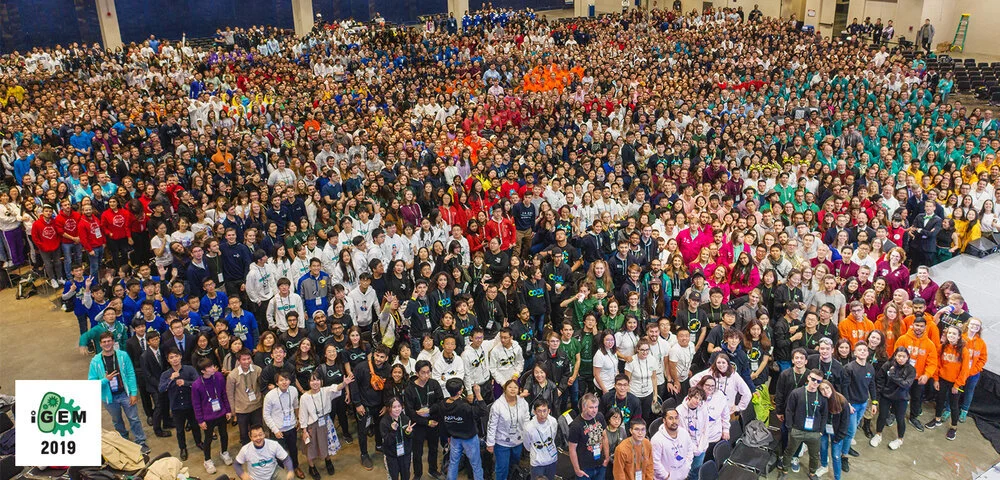Revive & Restore: Reflections on iGEM 2019 and a look toward 2020
by Ben Novak
The Revive & Restore booth banner from iGEM 2019.
At Revive & Restore, we’ve come to know iGEM is not simply a science fair, but is the largest synthetic biology innovation event in the world. It’s easy to see why: more than 6,000 students come to Boston from all over the planet, right at the peak of the Halloween season. Academics, policymakers, industry leaders, and even artists, are also drawn to iGEM. What’s especially cool is that everyone comes to learn about and expand upon synthetic biology and its potential to shape the future.
That’s because the biological mechanisms of nature are a powerful, creative set of tools. Synthetic biology, and its current and future practitioners, hold the promise to change the world. Seeing students innovate the field is very exciting. For Revive & Restore, being part of inspiring the next generation of biological engineers—especially those pursuing innovations in conservation—is an invigorating experience.
If you didn’t meet me or my colleague, Bridget Baumgarten, at iGEM 2019, allow me to introduce myself. I’m Ben Novak, lead scientist for Revive & Restore. Maybe you know me as the “Passenger Pigeon guy” or know Revive & Restore as the “people bringing back the Wooly Mammoth.”
While both are true, at our core, Revive & Restore is a nonprofit science foundation with a mission to enhance biodiversity through the genetic rescue of endangered and extinct species. We’re doing that by bringing biotech innovation to conservation. My initial project at Revive & Restore has been to plan for and oversee the Passenger Pigeon Project—to bring back the North American passenger pigeon from extinction. I also oversee the work to help enhance the genetic diversity of the endangered Black-footed Ferret—currently one of North America’s most threatened animals.
We also assign grants for early-stage, transformative bio-science research and proof-of-concept projects through our Catalyst Science Fund. Our current portfolio represents an array of research efforts headed by leading scientists across the country. Especially exciting is that our Catalyst Science Fund will be funding up to twelve iGEM teams in 2020!
You can learn more about our iGEM 2020 challenge at:
www.reviverestore.org/events/igem-2020/
We came to iGEM 2019 to raise student awareness around the partnership between Revive & Restore and iGEM for the 2020 season. Between our Think Alternatively t-shirts and the amazing conversations we had, I think we did rather well. Students and their mentors from more than twenty countries came by Revive & Restore’s booth and engaged in learning about genetic rescue and how iGEM teams could create solutions to wildlife problems—such as the development of synthetic alternatives to wildlife products.
Ben Novak discusses synthetic alternatives with attendees. Both images, courtesy of iGEM Foundation and Justin Knight.
I was delighted to see a number of teams working to solve pollution problems, control pest species, and develop genetic pathways for plants to thrive in warming conditions. These types of projects are exactly why Revive & Restore sees a great opportunity with iGEM. All of these tools could be adapted to support ecosystems—not just agriculture or medicine.
As an example, one of the most impressive moments at iGEM 2019 was the work from team FlyGEM, out of Israel. They developed transgenic bacteria capable of suppressing mosquito populations. Early tests show great potential. While the team is focused on combating mosquito-borne diseases for humans, their work could be translated easily to wildlife applications. Avian malaria for instance, is transmitted by mosquitoes and has caused the extinction of dozens of native bird species in Hawaii. It is also a leading threat to the remaining endemic bird species, which are also now facing ecological pressure due to climate change. Being able to suppress mosquito populations in Hawaii would be a boon for the island state’s native bird populations.
Most students I spoke with told me they got into synthetic biology because they wanted to make the world a better place. While a lot of interest lies in agriculture, medicine, and industry—and for good reason, too!—these tools could also revolutionize conservation.
The Revive & Restore Think Alternatively t-shirt design highlights the synthetic alternative Recombinant Factor C that can replace horseshoe crab blood in pharmaceutical testing.
A small number of iGEM teams are already working toward conservation solutions, and through Revive & Restore’s partnership with iGEM in 2020, we aim want to inspire more! Our follow-up survey found that for 94% of respondents, we had raised their interest in using synthetic biology for the genetic rescue of wildlife. What a win for biodiversity!
A recent United Nations report declared that we face an unprecedented biodiversity crisis, so we think it’s especially important to act now and drive innovation in this field. Ecosystem collapse may be the most pressing problem that synthetic biologists could help to solve. There are many ways synthetic biology could do this. Seldom has genetic science been used to empirically assess conservation practices. But with dropping costs in DNA sequencing, that is poised to change. And now, with new biotechnologies, the scope of "augmenting" genetic diversity is expanding greatly. Genetic rescue now spans a continuum of emerging applications from genetic insight to genomic intervention and most ambitiously, de-extinction.
For myself, having worked with Revive & Restore from the beginning, I’ve been privileged to meet scientists from around the world who are on the cutting edge of biotechnology and conservation. Their promising solutions, however, are often met with fears and concerns about the unintended consequences of intervening with nature. This is mostly from conservation’s “old guard” way of thinking: That it’s best to put a fence around nature and not disturb, or help it. But I think the newer generations of conservationists know that more traditional approaches to conservation alone cannot overcome the challenges we face in the Twenty-first Century.
Biotechnology is the key. We went to iGEM 2019 to inspire young biotechnologists to take up the fight for that future, but I was the one who became inspired. With these upcoming scientists, from every corner of the globe, the future of conservation is in good hands. With great anticipation, I look forward to supporting the creative ideas and great science from the iGEM 2020 teams.
What will your team be capable of for iGEM 2020? We look forward to seeing it!
You can learn more about our iGEM 2020 challenge at:
www.reviverestore.org/events/igem-2020/
Revive & Restore is a Partner Sponsor of the 2020 iGEM Competition. Learn more about sponsorship opportunities at iGEM.
For the 2020 Competition, Revive & Restore will award up to 12 grants of $5500 each to teams whose projects are focused on solving a problem in conservation. The proposal deadline has been extended to May 25, 2020. Learn more.










